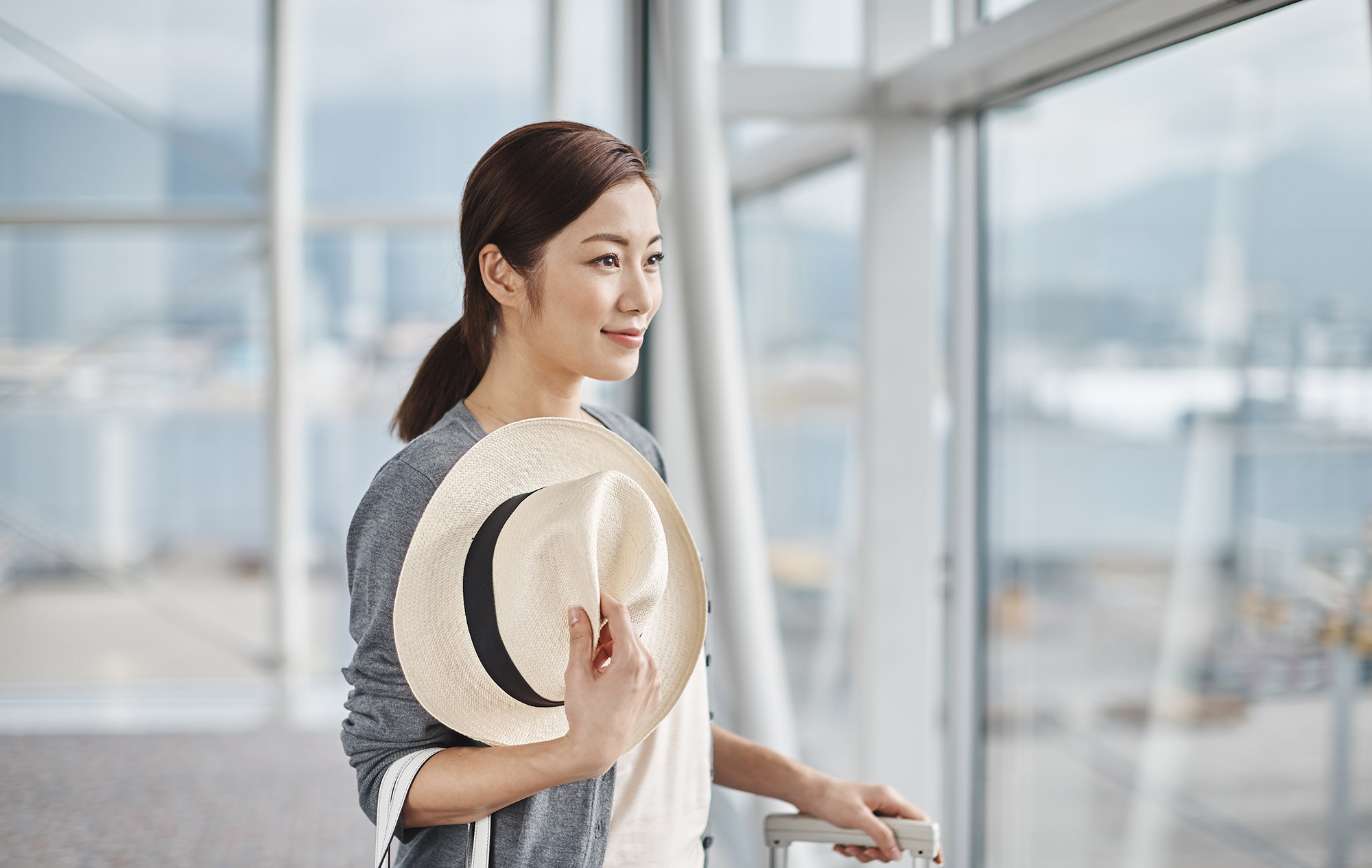The pre-flight rigmarole of rushed packing, traffic, airport queues and a long march to the gate is enough to frazzle even frequent flyers. Then comes the journey itself, with low air pressure, close quarters and shifting time zones that put our limbs, complexion, digestive system and internal clock through a kind of biological gymnastics.
With more of us flying more than ever, thankfully, airlines have begun rolling out more wellness-related offerings. Travellers can do their part, too, by adopting the following self-care strategies for before, during and after a flight.
Healthy travel tips for… easing your mind
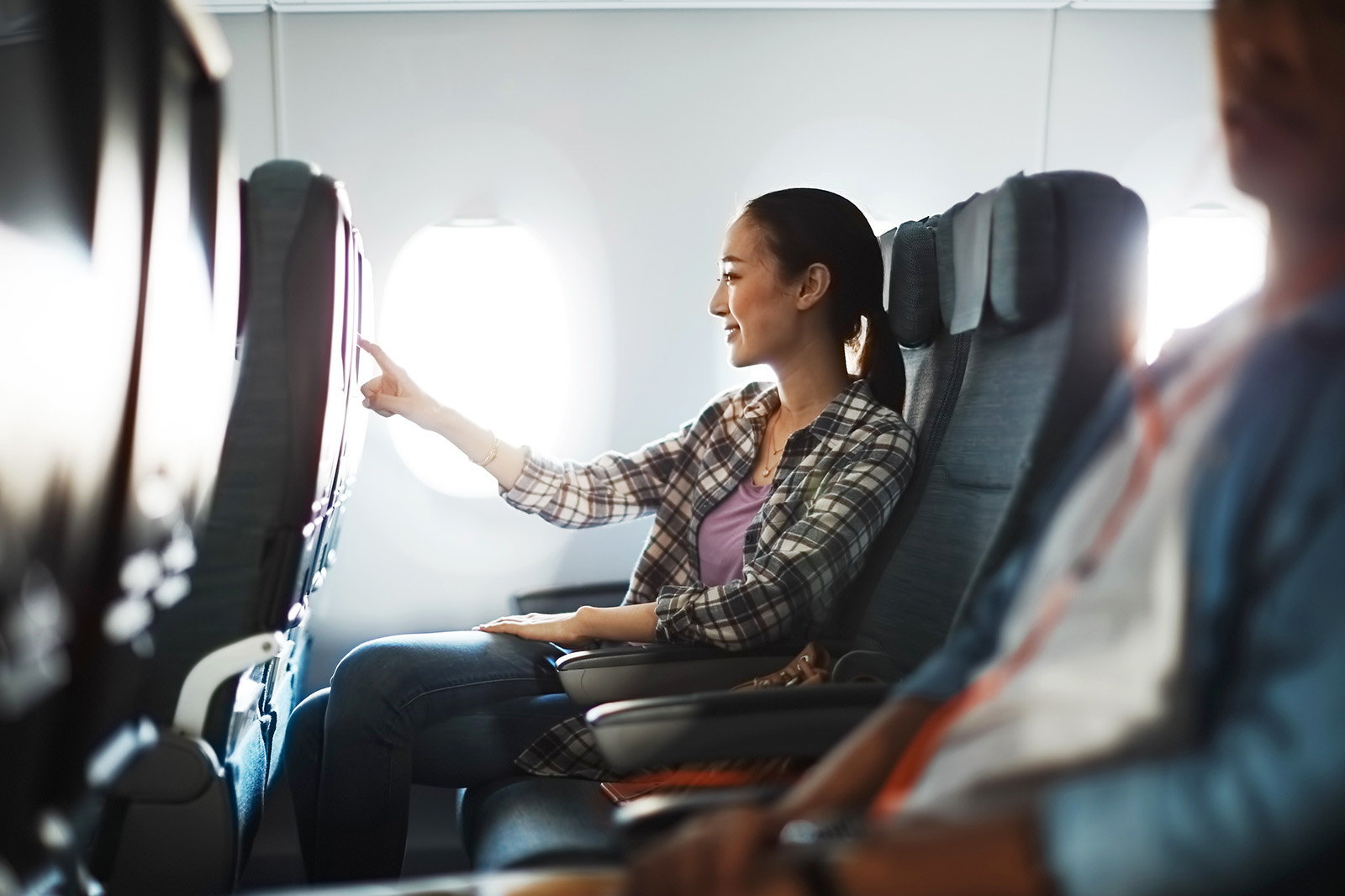
Samantha Foster, wellness consultant, biohacker and nutritionist, empathises with those who find the logistics of travel stressful. Pre-flight, she offers a simple and effective solution: ‘Allow plenty of time. The last thing a nervous flyer needs is additional stress triggers.’
Once on the plane, she encourages making good use of distractions, including the inflight entertainment. Movies work, as do episodes of Headspace’s mindfulness and meditation exercises, found on airlines such as Cathay Pacific.
‘Mindfulness is arguably today’s fastest growing wellness practice as we learn more about its ability to improve not just mental health, but also physical health and performance,’ says Foster.
Healthy travel tips for… staying limber
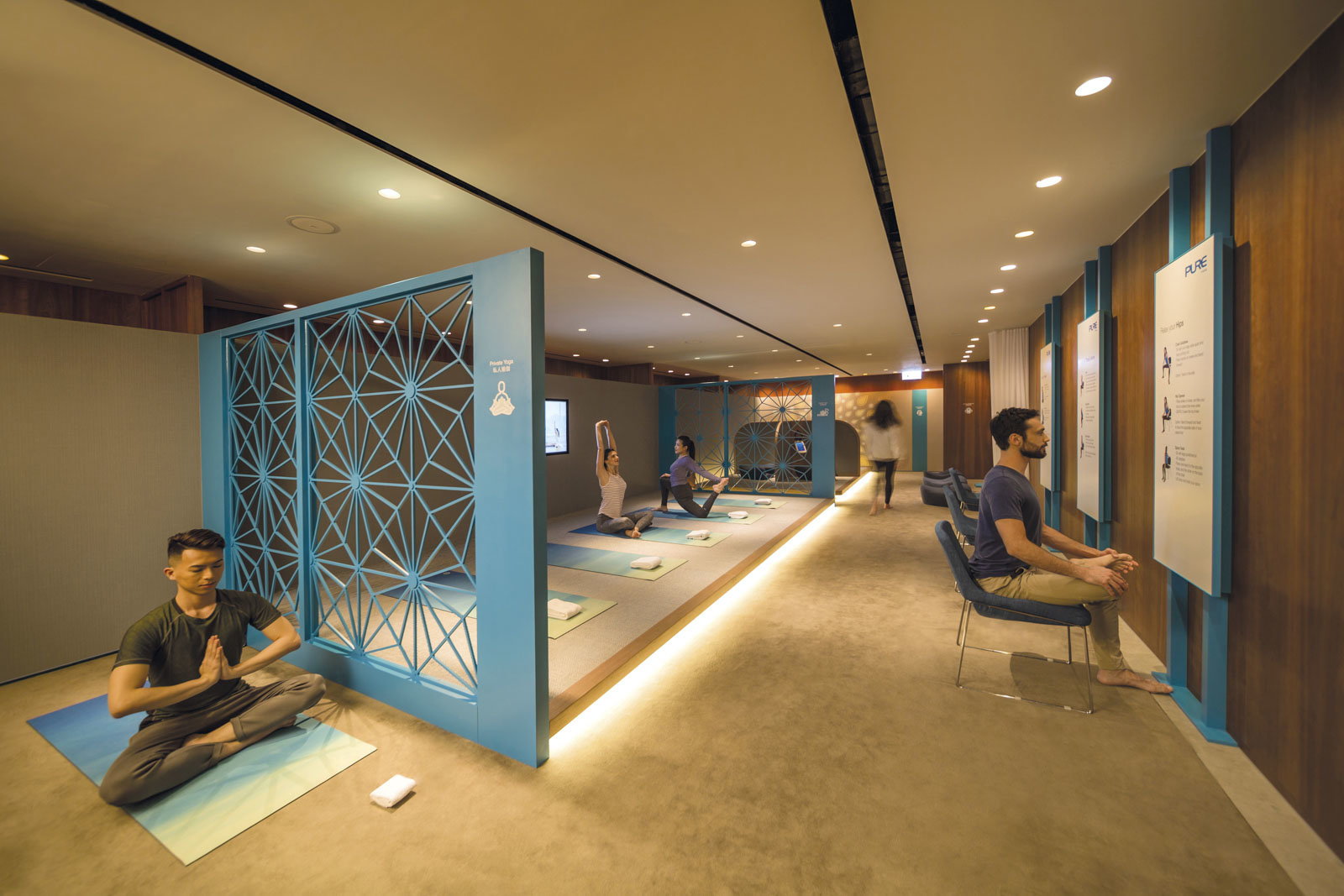
Shaking, stretching, dancing – any kind of movement helps, according to Andrew Cox, director of training at Joint Dynamics in Hong Kong. He recommends fitting in a high-intensity workout the day you fly, as it pays back with fatigue that will make you more likely to rest well during your flight. If a workout isn’t realistic, why not use any down time at the airport to rack up steps while waiting to board.
Better yet, flyers with lounge access can take advantage of The Sanctuary by Pure Yoga, a 700-square-foot yoga and meditation space in The Pier Business Class Lounge at Hong Kong International Airport. It includes instruction boards to guide people in body stretches done while sitting down – many of which can be easily replicated in the air. Cathay Pacific’s ongoing wellness partnership with Pure also includes six inflight videos with instruction on how to perform easy yoga poses and meditations.
Inflight yoga and stretch programs are effective, especially for sedentary passengers with compromised circulation who may be at risk of deep-vein thrombosis (DVT), a serious if extremely rare condition. ‘Blood flow brings with it the gifts of oxygen, nutrients and hormones, which greatly decrease the likelihood of DVT, especially when coupled with adequate hydration,’ says Cox, who flies about 10 times a year.
The benefits of exercise continue to pay off once you arrive. It may not feel like your best workout, but it will do wonders to release muscle tension, get the blood flowing and help you sleep better at your new destination.
Healthy travel tips for… pampering your skin

Naturally, we all want to look – well, if not our best then something close to it – even after a long-haul journey. Self-care can make huge differences to your skin, according to Karen Aleksich, general manager of Protea, distributors of Environ skincare.
‘Plane air is dry and cool, depleting the skin’s natural water and oil,’ she says. ‘Your face and hands are most affected, and if you have dry and sensitive skin you’ll feel the effects for a few days afterwards.’ As a result, Aleksich’s number-one recommendation is to hydrate, beginning pre-flight with a gentle exfoliating and hydrating facial mask.
She also packs an inflight kit that includes Environ Vita-Antioxidant Hydrating Oil Capsules, hand cream and Jane Iredale Lip Balm. Aleksich applies these products every three to four hours in addition to taking evening primrose or multivitamin supplements to keep her immunity strong against inflight germs.
Even selecting your outfit for the plane presents an opportunity to be a little kinder to your body. Lara Murison, an occupational health specialist in Cathay Pacific’s corporate medical team, suggests loose-cut clothes made from natural fibres and comfortable shoes that can accommodate possible swelling.
Once you’ve arrived, washing your face is refreshing and removes any pollutants on your skin, says Aleksich. Pop on a hydrating mask (look for vitamins A and C, peptides or antioxidants) to feed your skin with intensive nutrients and focus on consuming antioxidant-rich foods and drinks to fortify the body internally.
Healthy travel tips for… eating wisely
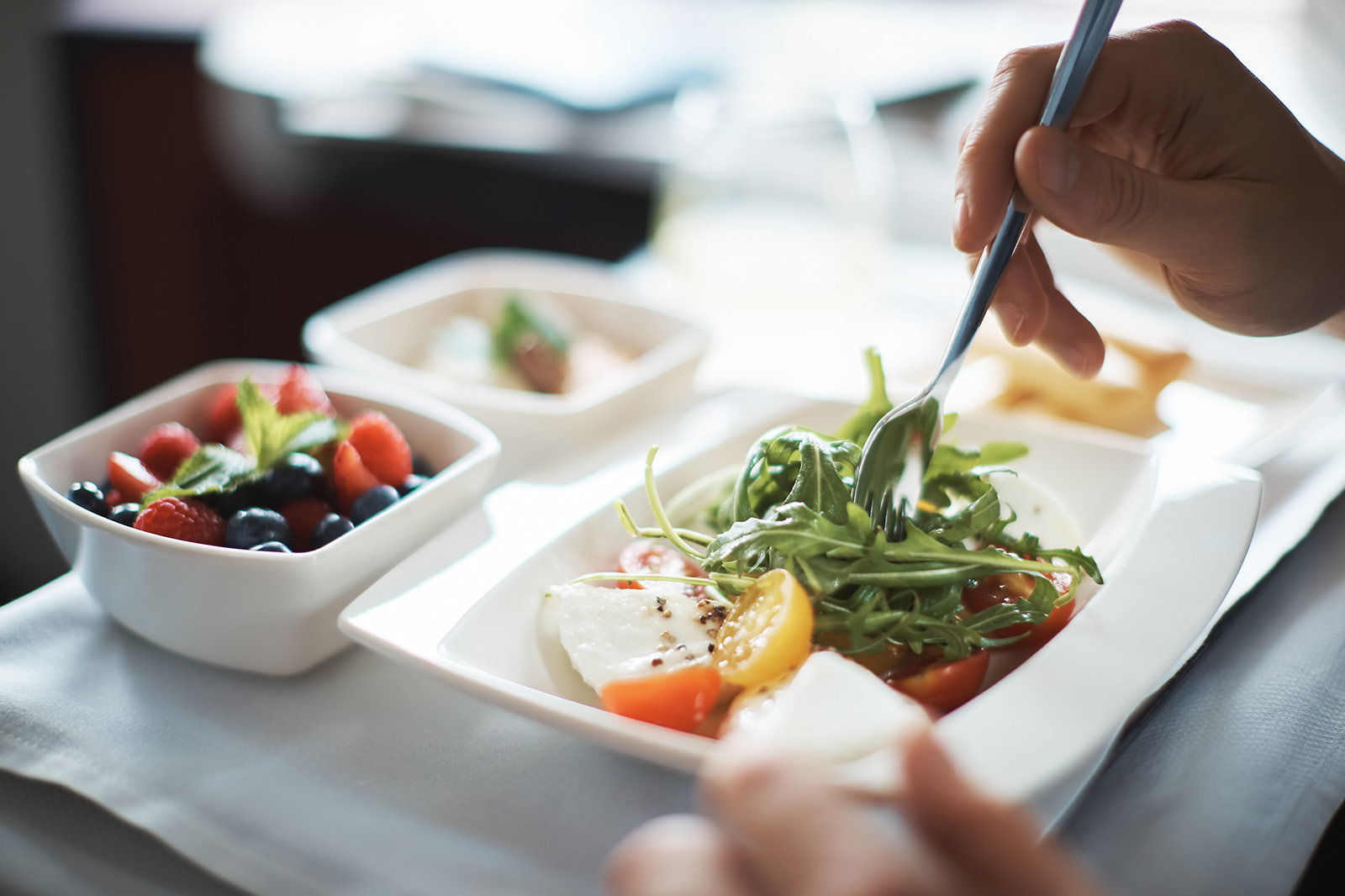
A Fraunhofer Institute for Building Physics study found that the air pressure at 30,000 feet dulls the sensitivity of taste buds. Up to 80 per cent of taste comes via our sense of smell, which is challenged in low humidity, lessening our perception of salty and sweet, which are also affected by the approximately 85 decibels of in-cabin engine noise. Interestingly, umami, sour, bitter and spicy remain mostly unchanged.
At least 24 hours before flying, for you and your fellow passengers, it’s a good idea to avoid foods that trigger fluid retention (pretzels and other salty snacks), inflammation (sugar and gluten) or excess gas leading to joint pain, bloating and flatulence (legumes, lentils, onions, cabbage).
Try to pre-book the lighter, vegetarian meal option and bring an arsenal of healthy snacks, such as raw nuts, bananas and complex carbs like oatmeal, all of which help promote sleep, according to the National Sleep Foundation. Pair it all with plenty of water – around 8 fluid ounces (235 millilitres) an hour.
“I book an aisle seat so I can move every hour, and I create a virtuous circle of getting up for water, meaning more trips to the loo and more chances to get water,” says Foster, who takes three-to-four long-haul flights annually.
As for alcohol, it may help pick you up and then get you snoozing, but the quality of your sleep and subsequent wellbeing on arrival will suffer. Taking medication on the plane can also be counterproductive and leave you feeling drowsy the first day or two in your new destination.
Healthy travel tips for… sleeping better
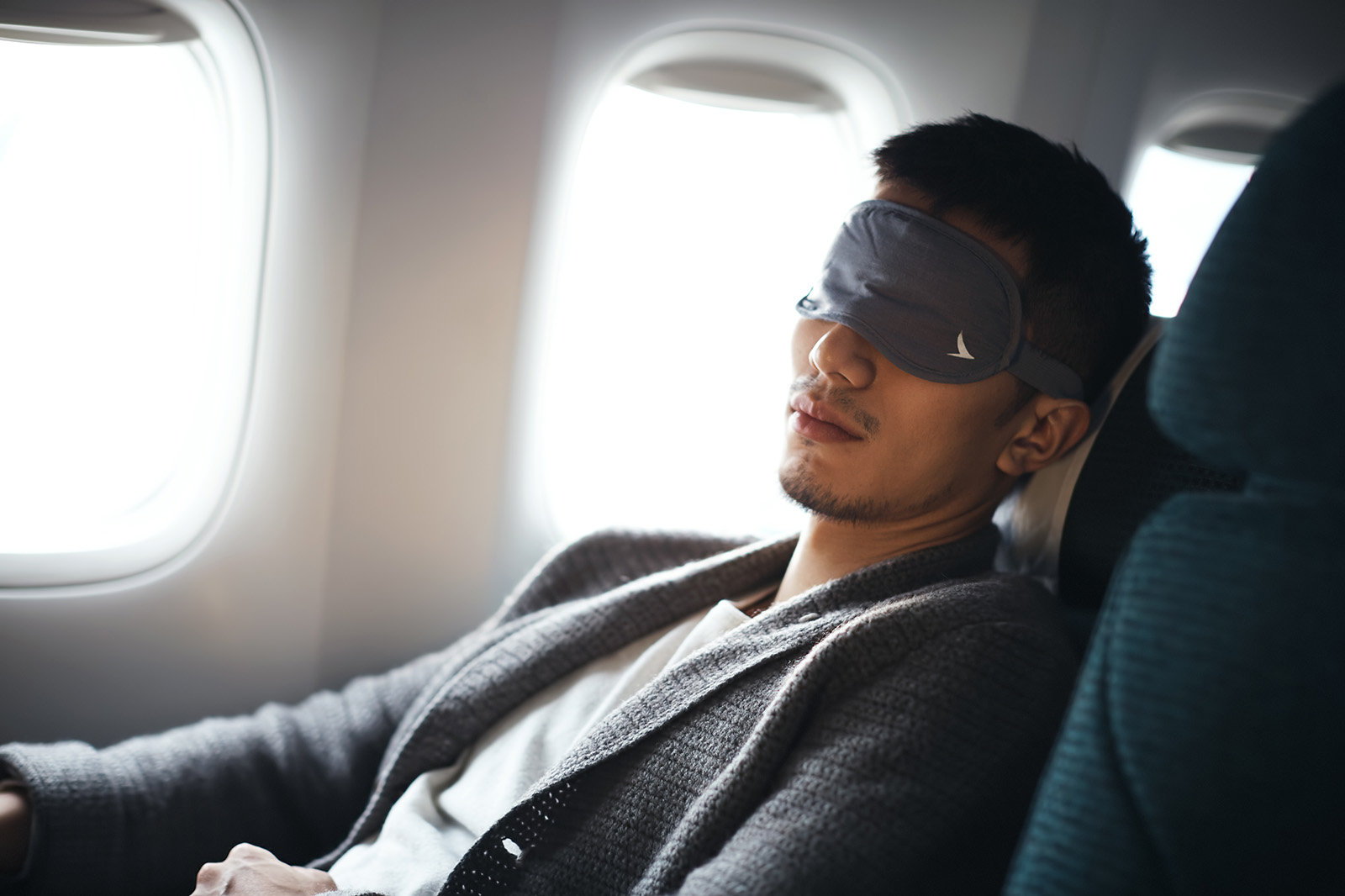
When possible, it pays to book flights on newer planes for improved humidification, comfort and noise reduction. Cathay Pacific has one of the youngest long-haul fleets around (5.9 years as of 2018) and began rolling out service on the quiet, efficient A350-1000 in July 2018.
It’s also strategic to schedule daytime arrivals for that natural jolt of light and vitamin D. Light tells our bodies when to make melatonin at night and cortisol in the morning, and our other organs chime in with this schedule, so when light exposure takes a U-turn, confusion – and jetlag – sets in. ‘When your internal clock doesn’t match the external clock, it can be, and feel, like World War III in your body,’ says Dr Michael Breus, aka ‘The Sleep Doctor.’
He suggests making a point to rest up before a trip and adjust incrementally to your new time zone. When flying west, wake up and go to sleep an hour earlier each day for three days; if flying east, an hour later each day. Download apps like Timeshifter, which handily takes over the calculations of when to wake, get out into light, or retreat to nap and sleep.
Once onboard, reset your watch and take your eating and sleeping cues from your new time zone. Bring out a ‘sleep kit’ you’ve packed in your carry-on, with ear plugs, eye mask and neck pillow, plus toothbrush and paste to simulate bedtime.
If you arrive during the day, get out into the sun and exercise to help your internal clock synchronise faster. If you land in the evening, keep away from bright lights and, should sleep evade you, try a bit more meditation. ‘It can help bring calm to the body and mind,’ says Dr Adrian Williams, Professor of Sleep Medicine, King’s College, London. ‘Conversely, when sleepiness invades, it helps you with the mindful acceptance that it will pass.’
Lastly, don’t underestimate the value of naps. They can increase your creativity, concentration, decision making, memory, mood and reduce stress; the secret is to time them well. It’s our biology – not just a heavy lunch – that slows the body down in the middle of the day. This is the perfect time for a power nap, roughly seven hours after waking (and seven hours before sleeping). Choose either less than 25 minutes to avoid interrupting deep sleep with the resulting grogginess, or go for a full 90-minute cycle.



